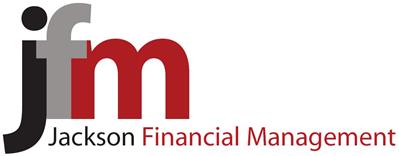Portfolio construction is always a popular topic among investors, but as markets become more volatile, the practice of carefully piecing together a jigsaw of investments that weathers both good times and bad is particularly relevant.
Effective portfolio construction is essential to successful investing, but many investors struggle to understand the underlying concepts, much less put them into practice.
Fortunately, constructing an investment portfolio that suits your needs and delivers your goals is simpler than it sounds.
The first step to effective portfolio construction is simply knowing what you want to achieve.
Every portfolio has a purpose. It might be to fund your retirement or to provide an inheritance for the children. It might be to pay for education or housing.
Understanding your purpose and setting a goal for your portfolio lets you plan for how much you need to invest and how long you have for your savings to grow.

Good portfolio goals are measurable, attainable and based on reasonable assumptions. That means they do not require impracticable savings targets, lucky breaks or unlikely investment outcomes.
Take the example of an investor who needs to save $1 million in today’s dollars to comfortably retire and has 40 years of working life left to do it.
If that investor makes a $10,000 deposit today and saves the same inflation-adjusted amount every year for the 40 years, the real required rate of return from the portfolio only needs to be an achievable 4 per cent per year.
The portfolio construction process begins with this kind of plan.
From there, the next decision is to select the assets that will deliver the required 4 per cent return without exposing the investor to needless risk.
There are three main asset classes for investors to consider: equities, fixed income and cash.
There is also a wide range of sub-groups like real estate, infrastructure and commodities, but most diversified investors will have exposure to them through the equities asset class.
Asset classes are best understood by the way they typically perform in terms of risk and return.
Equities, or shares in stock market-listed companies, are characterised by demonstrating the highest historical return of the three, but with an associated higher risk of loss.
Fixed income investments like government and corporate bonds tend to provide lower returns but come with lower risk of losing money.
Finally, cash provides both low return and very low risk and protects you from the risk of being forced to sell other assets, but its value is continually eaten away by inflation.
So how do investors balance the three?
The aim is to find a way to deliver enough return to achieve the goal while minimising the risk of permanently losing capital on the way.
This concept of risk is worth exploring. Many investors conflate risk with volatility but for a regular investor with a defined goal, a better definition of risk is the chance of losing money at the very point you need it.
A period of negative returns in the market – as we are likely to see in the coming years – may not be a risk for someone willing to wait until the market recovers, thereby avoiding selling during the downturn.
But if another investor needs the money and has to sell at lower prices, that becomes a permanent loss of capital – the definition of risk.
This risk of permanent loss is why younger people can comfortably take more risk in their investments – and thus aim for a higher return – than someone nearer retirement.
A 35-year-old has at least 30 years of earning income ahead of them, allowing market downturns to run their course. Their income covers their living expenses, so they don’t need to withdraw investments at depressed prices, and they even get more assets for every dollar they invest during the downturn. This means they can lean towards equities which offer higher returns at higher risk.
Someone in their 50s has 15 years left of income to recover losses and might choose to take slightly less risk in their investments by reducing their equity holdings.
A retired person has no easy way to add to their investments so if they are forced to withdraw at depressed prices, they suffer permanent loss. In retirement, an even more conservative portfolio might be suitable.
For all investors, constructing a diversified portfolio spread across the three asset classes is the best way to reduce the risk of permanently losing money.
Asset allocation is a surprisingly powerful tool.
Repeated studies show that the vast majority of variability in portfolio returns is explained by asset allocation rather than stock selection or market timing.
So, by simply selecting an asset class mix that suits your risk and return needs – and then buying a widely diversified bundle of investments matching that mix – most of the work of portfolio construction is done with no need to worry about individual investments at all.
Contrast this kind of steady, planned, top-down approach with the bottom-up, investment-collecting approach many investors take.
By buying individual stocks and funds without giving thought to the overall portfolio construction, investors are introducing unnecessary risk to their investments and crimping potential returns.
Portfolios built this way often show concentration in an industry or sector and are prone to being buffeted by volatility and attempts at market timing.
A well-constructed portfolio should also diversify by holding assets across a variety of countries, sectors and industries. Investors may even want to consider a mix of investment styles by holding active managers alongside index funds.
By holding hundreds or thousands of individual securities, the chances of any one of them affecting total returns is minimised.
The next factor to consider is fees. One of the best predictors of the future performance of an investment is the fee it charges. Some find it surprising, but the cheaper the fee, the better the performance. This is because the less you pay in costs, the more of an investment’s return you get to keep.
Minimising costs is a crucial part of portfolio construction.
And finally, once the portfolio is in place, the critical trick is to stay the course.
Too many investors have been provoked by market swings to buy and sell at the wrong time, driven by fear or impulse.
A disciplined, long-term approach – rebalancing from time to time to stay within a chosen asset allocation and adjusting the risk profile as you age – gives you the best chance of achieving your goal.
Written by Robin Bowerman, Head of Corporate Affairs at Vanguard.
Please contact us on Phone 02 9906 6566 if you seek further assistance on this topic .
Reproduced with permission of Vanguard Investments Australia Ltd
Vanguard Investments Australia Ltd (ABN 72 072 881 086 / AFS Licence 227263) is the product issuer. We have not taken yours and your clients’ circumstances into account when preparing this material so it may not be applicable to the particular situation you are considering. You should consider your circumstances and our Product Disclosure Statement (PDS) or Prospectus before making any investment decision. You can access our PDS or Prospectus online or by calling us. This material was prepared in good faith and we accept no liability for any errors or omissions. Past performance is not an indication of future performance.
© 2020 Vanguard Investments Australia Ltd. All rights reserved.
Important: Any information provided by the author detailed above is separate and external to our business and our Licensee. Neither our business nor our Licensee takes any responsibility for any action or any service provided by the author. Any links have been provided with permission for information purposes only and will take you to external websites, which are not connected to our company in any way. Note: Our company does not endorse and is not responsible for the accuracy of the contents/information contained within the linked site(s) accessible from this page.


